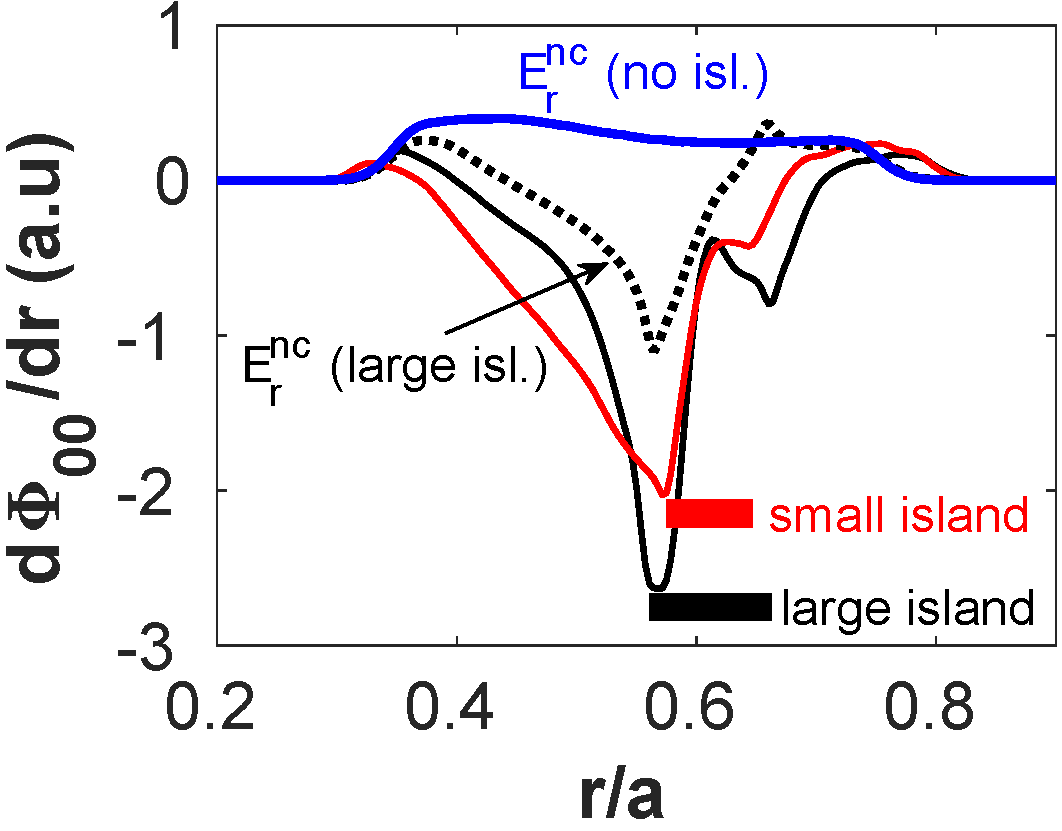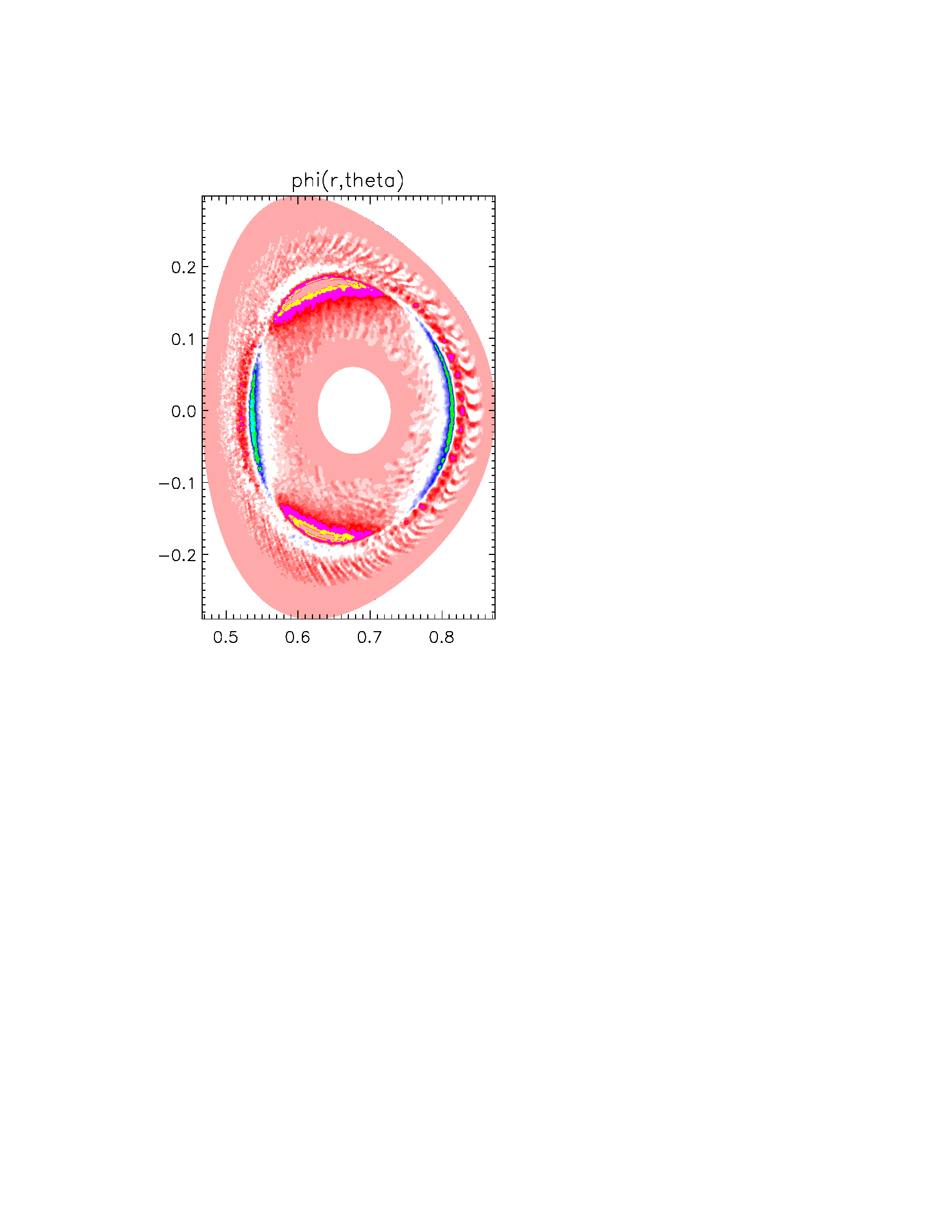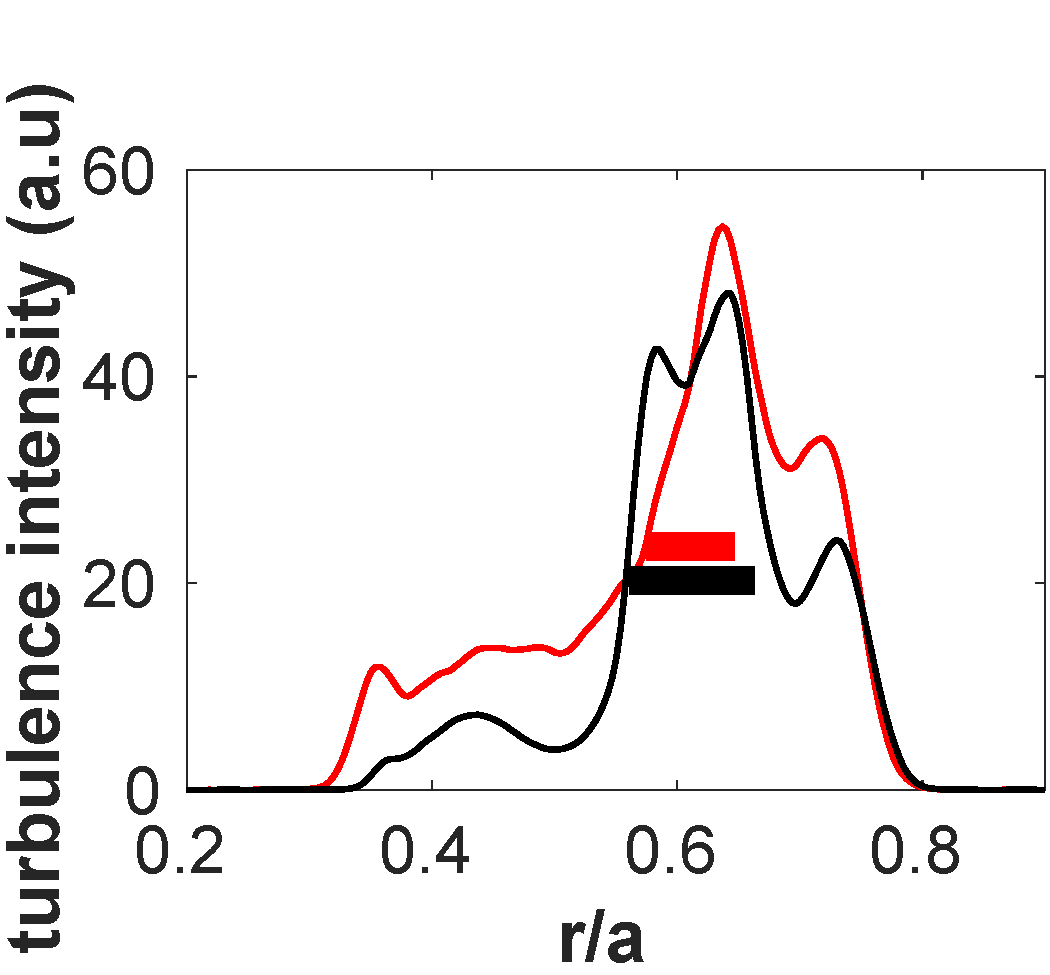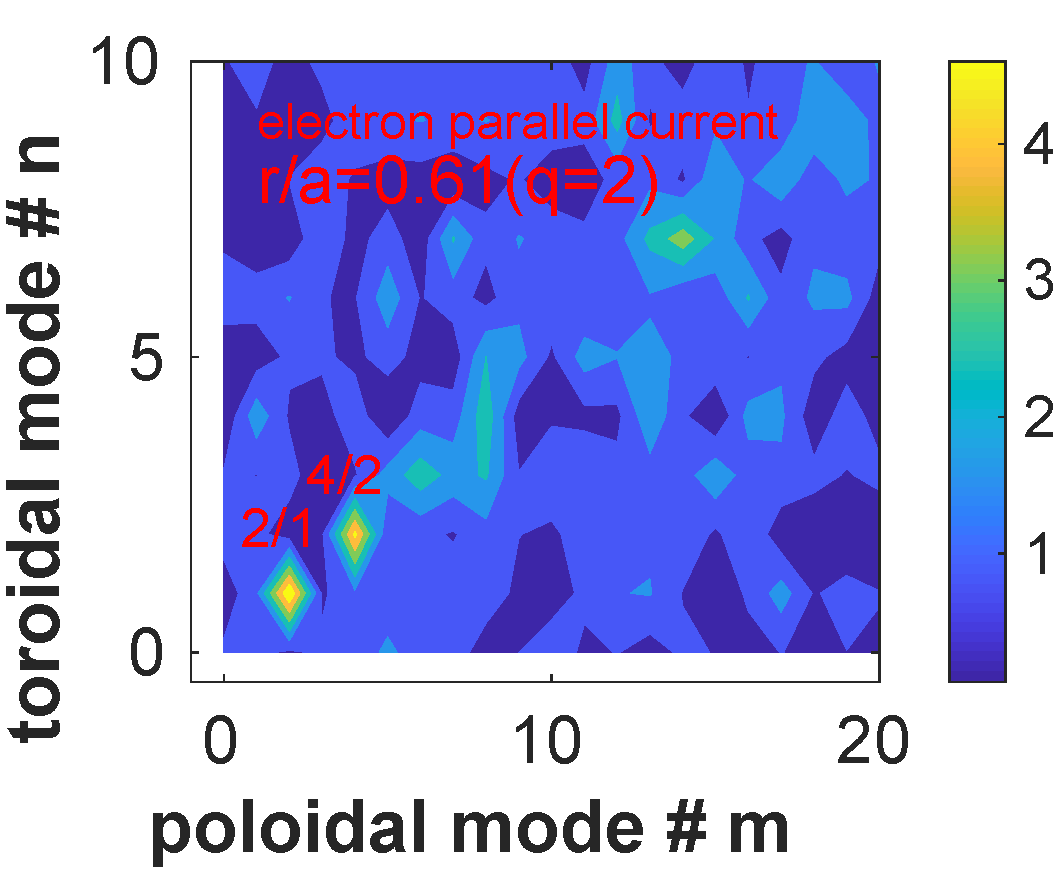Speaker
Description
Tokamak discharges with internal transport barrier (ITB) offer compelling features needed for steady state operation of burning plasmas for its improved energy confinement and high bootstrap current associated with large pressure gradient. To develop a stable ITB plasma usable for fusion reactors, it requires a deep physics understanding of ITB formation and its profile control. This paper reports on a novel simulation study, showing that magnetic islands can strongly change ${\bf E}\times{\bf B}$ shear flow structure and consequently influence turbulence, plasma transport, and confinement [1]. The results elucidate a long standing theoretical hypothesis based on experimental evidences that magnetic islands may trigger ITB formation inside a low-order rational magnetic surface. Practically, a low-n resonant magnetic perturbation (RMP) may be used as an ITB controller through its penetration to drive a controllable island at a desirable core location with a rational surface. The magnetic island perturbation is also found to largely change plasma self-driven current in tokamaks, impacting the steady state operation.
This simulation study employs a global gyrokinetic model that couples self consistent neoclassical and turbulent dynamics (neoclassical effects are often ignored in typical gyrokinetic turbulence simulations). This allows us to calculate a 3D neoclassical equilibrium electric field in 3D perturbed tokamak geometry with magnetic islands, which is shown to have a great impact on turbulence and the associated transport in the island geometry. This simulation feature is also critical for calculating plasma self-driven current in the presence of turbulence [2]. Simulation results reported here are obtained with experimental plasma parameters of a C-Mod L-mode Ohmic discharge which has ITG dominated turbulence in the core plasma. This discharge has a monotonic q profile. A prescribed static m/n=2/1 magnetic island is imposed on the $q=2$ surface located at the normalized minor radius $r/a=0.61$. To focus on the effects of magnetic islands, toroidal rotation is set to zero in the simulations.
It was shown that micro-turbulence can drive a strong electron current profile corrugation near a low-order rational magnetic surface with weak magnetic shear by residual stress, which may seed/drive a magnetic island at the surface [2]. Magnetic islands, by altering the topological structure of the confining magnetic field, have varied and complex impacts on plasma confinement in fusion experiments. Both the purely neoclassical simulation and the coupled neoclassical-turbulence simulation show a similar dynamic picture of radial electric field development from initial geodesic acoustic oscillation and radial propagation to the formation of a stationary $E_r$ well. Remarkably, the stationary $E_r$ well formed near the magnetic island is peaked at the inner boundary of the island (with a much lower peak at the outer boundary) (Fig.1). Compared to the case of axisymmetric tokamak (with no magnetic perturbations), the magnetic island is found to cause a change of plasma equilibrium from a weak negative radial electric field to a strong positive one. The electric field bifurcation is mainly due to the island-induced topological change in the magnetic field, which alters the ambipolarity condition of particle transport that determines the equilibrium electric field. Further, the $E_r$ well gets deeper as the island becomes wider (Fig.1). All these results are in qualitative agreement with experimental observations [3]. In addition to the strong zonal $E_r$ well, a stationary low-n potential structure dominated by a 2/1 mode is also formed at the same radial locations of inner and outer boundaries of the magnetic island (Fig.2). The amplitude of the $2/1$ potential is much higher than that of ITG turbulent fluctuations, and increases as the island width increases. The $2/1$ mode and its low-n harmonics (4/2, 6/3, 8/4 etc) form coherent vortex flows which are also observed in fluid simulation [4] and tokamak experiments [5] A remarkable feature revealed from our simulation is that the 2/1 modes are non-resonant, peaking at the boundaries of the island. The combination of zonal (0/0) and (2/1) mode (both defined with respect to unperturbed equilibrium geometry) produces a total potential well aligned with the perturbed flux surfaces, and correspondingly, a poloidal ${\bf E}\times{\bf B}$ shear flow on the perturbed surfaces. The island-induced radially localized ${\bf E}\times{\bf B}$ shear layer along with the sheared vortex flows due to the low-n potential can impact turbulence and associated transport in two-fold. First, the strong ${\bf E}\times{\bf B}$ shear is shown to effectively reduce and even suppress turbulent fluctuations in the inner core region next to the island through the well-known sheared advection of fluctuations (Fig.3). Second, the localized ${\bf E}\times{\bf B}$ shear layer can reduce and even block turbulence spreading from one side to the other [6], and then effectively decouple the plasma inside the shear layer from the outside. Depending on the width of the magnetic island, the two effects act together, naturally facilitating the formation of an ITB at the inner side of a rational magnetic surface where the island locates. The simulation further suggests that there may exist a critical island width which produces ${\bf E}\times{\bf B}$ shear that is strong enough to trigger ITB. The similar phenomenology of transport barrier triggered by the island-induced $E_r$ well may also play a role in the L-H transition.
Plasma self-driven electron current is also largely changed, not only locally in the island region but also globally. The current is changed in a way consistent with the island-induced electric field structure and pressure profile flattening. In particular, the parallel acceleration of electrons by the non-resonant 2/1 mode, which has intrinsically finite $k_{\parallel}$, is found to play a major role. As a result, axisymmetric current is largely reduced and a helical current is generated in the island region (Fig.4).




-
W. X. Wang, ``${\bf E}\times{\bf B}$ shear flow structure and plasma self-driven current generation in magnetic island", AAPPS-DPP 2019 (plenary talk), Hefei, Nov. 4-8, 2019.
-
W. X. Wang et. al., Nucl. Fusion ${\bf 59}$, 084002 (2019).
-
K. Ida et. al., Phys. Plasmas ${\bf 11}$, 2551 (2004).
-
A. Ishizawa et. al., Plasma Phys. Control. Fusion ${\bf 61}$, 054006 (2019).
-
M. J. Choi et. al., Nucl. Fusion ${\bf 57}$, 126058 (2017).
-
W. X. Wang et. al., Phys. Plasmas ${\bf 14}$, 072306 (2007).
| Affiliation | Princeton University Plasma Physics Laboratory |
|---|---|
| Country or International Organization | United States |
